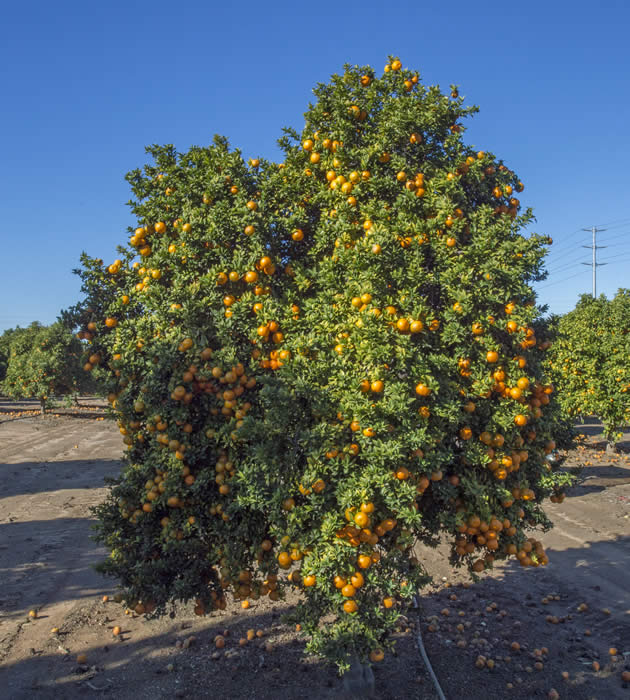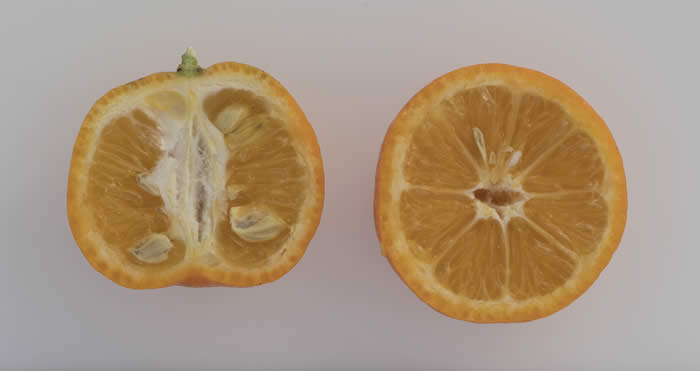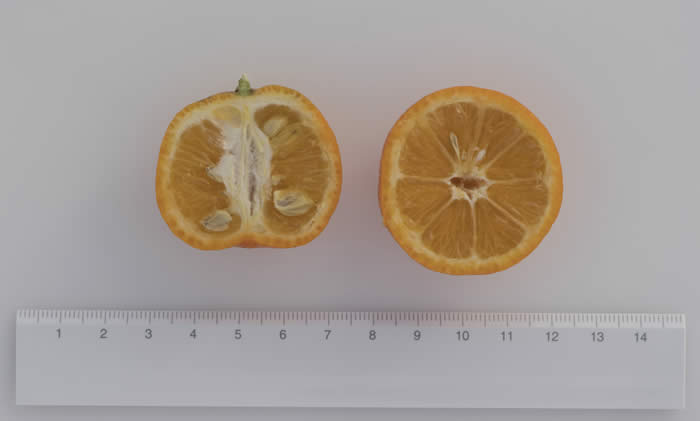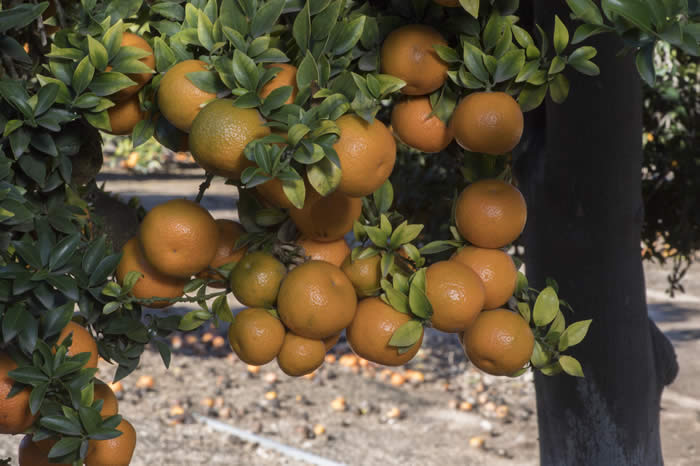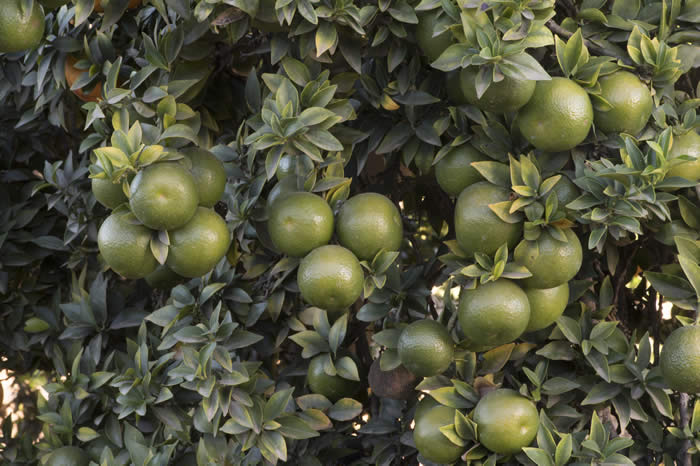Citrus myrtifolia Rafinesque
CRC 3857
VI 427
Source
Received as a live plant from an old budline of Chinotto, 1961.
Parentage/origins
Seedling of CRC 2375 Chinotto sour orange.
Rootstocks of accession
Carrizo citrange, C-35 citrange
Season of ripeness at Riverside
January to March
Notes and observations
2/26/1988, EMN: Six seedling budlines were fruited at Lindcove; all appeared identical.
OJB: Chinotto sour orange is sometimes referred to as the Myrtle-leaf orange. The tree grows very slowly and has a dwarf compact habit. The leaves are small (usually under two inches in length), dark green in color, and lanceolate inshape. They are carried densely on the thornless branches and twigs. The tree flowers and sets very good crops of small orange fruits of moderate seediness. These fruits mature in winter and are moderately tart. The fruits hang on the tree for most of the year, making the tree highly ornamental. Chinotto's primary use is as a decorative element in the landscape.
Description from The Citrus Industry Vol. 1 (1967)
"Because it somewhat resembles the sour orange, the myrtle-leaf orange (chinotto of Italy, chinois of France) is commonly considered to be a botanical variety of C. aurantium L. Indeed, the presumption is that the myrtle-leaf orange originated as a mutation from the sour orange. The differences are sufficiently great and the degree of variation exhibited so wide, however, as to appear to justify separate species standing.
The several forms of the myrtle-leaf orange are all characterized by low vigor, slow growth, and small trees with brachytic thornless branchlets, the internodes of which are so short that the leaves are crowded and the growth habit more or less dense and compact. The leaves are very small, dark green, and usually but not always lanceolate-pointed. The fruits are small, oblate to round, with more or less rough rind surface and orange to deep orange in color. The seed content is highly variable and ranges from few or no seeds to many.
The myrtle-leaf orange has been known for some centuries in the Mediterranean and, as its Italian and French names imply, was presumably introduced from China. It is grown primarily as an ornamental though the fruits of certain forms have long been prized and used for candying or "crystallizing" whole. Its commercial culture appears to be confined largely to the province of Liguria, Italy. Elsewhere it is an attractive and useful ornamental.
At least four forms or varieties of myrtle-leaf orange are recognized and there are doubtless several clones of each. Three of these forms have leaves which resemble those of the myrtle; the leaves of the fourth are more like those of the boxwood."
Availability
Commercially available in California through the Citrus Clonal Protection Program. Click here to order budwood.
USDA Germplasm Resources Information Network page for Chinotto sour orange hybrid (CRC 3857)
